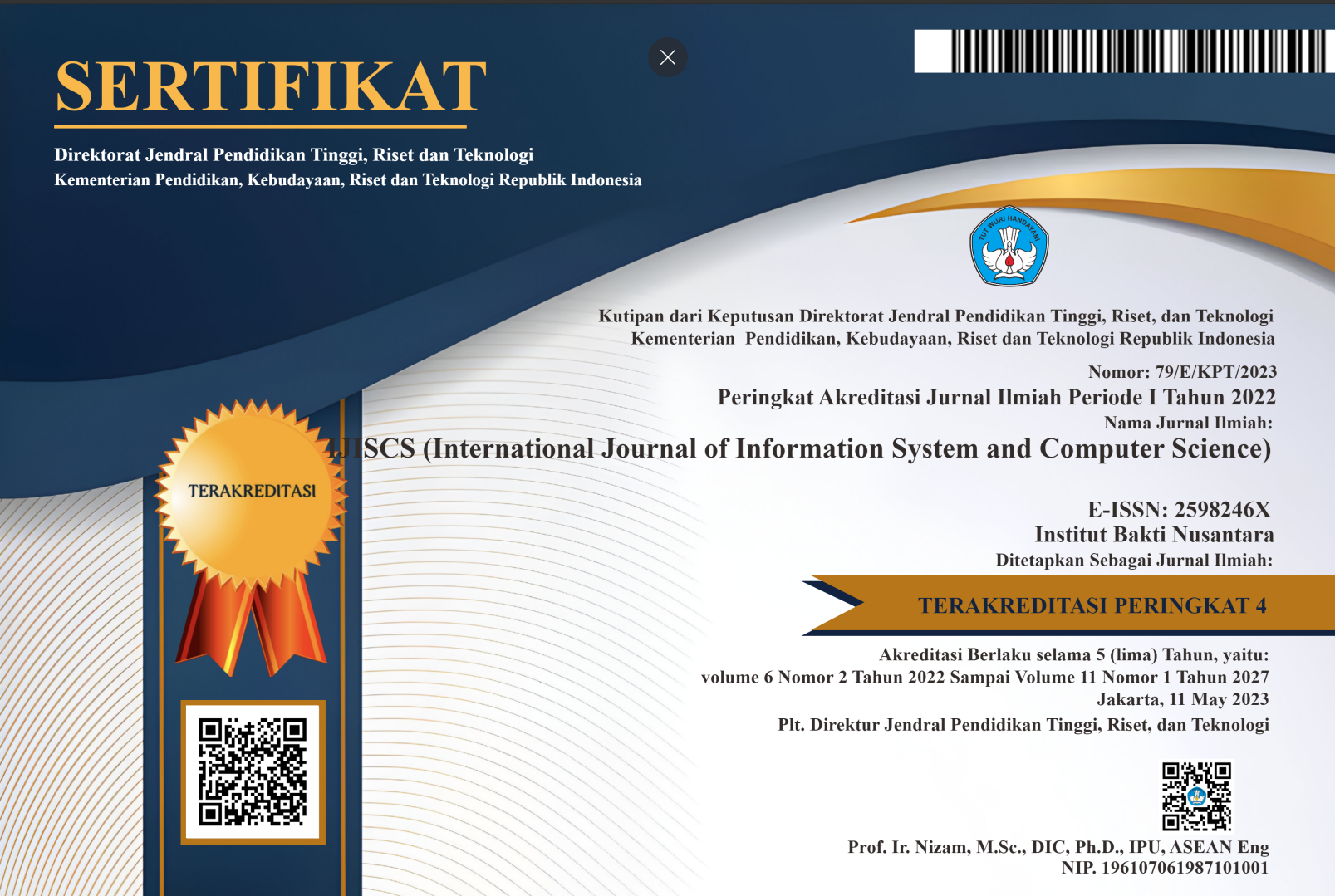GOOGLE PLAY STORE USERS COMMENT REVIEW CLASSIFICATION USING SVM CLASSIFIER AND RANDOM FOREST
(1) Computer Science Department, BINUS Graduate Program-Master of Computer Science, Bina Nusantara University, Jakarta
(2) Computer Science Department, BINUS Graduate Program-Master of Computer Science, Bina Nusantara University, Jakarta
 Corresponding Author
Corresponding Author
Abstract
Keywords
References
N. Viennot, E. Garcia, and J. Nieh, “A measurement study of Google Play,” in Performance Evaluation Review, Association for Computing Machinery, Jun. 2014, pp. 221–234. doi: 10.1145/2591971.2592003.
S. Hassan, C. Tantithamthavorn, C. P. Bezemer, and A. E. Hassan, “Studying the dialogue between users and developers of free apps in the Google Play Store,” Empir Softw Eng, vol. 23, no. 3, pp. 1275–1312, Jun. 2018, doi: 10.1007/s10664-017-9538-9.
R. I. Kurnia, Y. D. Tangkuman, and A. S. Girsang, “Classification of user comment using word2vec and SVM classifier,” International Journal of Advanced Trends in Computer Science and Engineering, vol. 9, no. 1, pp. 643–648, 2020, doi: 10.30534/ijatcse/2020/90912020.
J. J. C. Mca, M. Phil, and D. Ph, “GREEN – MOBILE CLOUD COMPUTING AND ITS APPLICATIONS 3G / 4G,” vol. 3, no. 20, pp. 342–344, 2016.
P. Domingos and M. Pazzani, “On the Optimality of the Simple Bayesian Classifier under Zero-One Loss,” Kluwer Academic Publishers, 1997.
I. Rish, “An empirical study of the naive Bayes classifier.”
M. S. Saputri, R. Mahendra, and M. Adriani, “Emotion Classification on Indonesian Twitter Dataset,” Proceedings of the 2018 International Conference on Asian Language Processing, IALP 2018, no. January 2019, pp. 90–95, 2019, doi: 10.1109/IALP.2018.8629262.
M. Pal, “Random forest classifier for remote sensing classification,” Int J Remote Sens, vol. 26, no. 1, pp. 217–222, Jan. 2005, doi: 10.1080/01431160412331269698.
Amity University and Institute of Electrical and Electronics Engineers, 10th International Conference on Cloud Computing, Data Science & Engineering : proceedings of the Confluence 2020 : 29-31 January 2020, Amity University, Uttar Pradesh, India.
M. T. Khan, M. Durrani, A. Ali, I. Inayat, S. Khalid, and K. H. Khan, “Sentiment analysis and the complex natural language,” Complex Adaptive Systems Modeling, vol. 4, no. 1. Springer, Dec. 01, 2016. doi: 10.1186/s40294-016-0016-9.
S.-I. Ao and International Association of Engineers, International MultiConference of Engineers and Computer Scientists : IMECS 2019 : 13-15 March, 2019 : The Royal Garden Hotel, Kowloon, Hong Kong.
M. Giatsoglou, M. G. Vozalis, K. Diamantaras, A. Vakali, G. Sarigiannidis, and K. C. Chatzisavvas, “Sentiment analysis leveraging emotions and word embeddings,” Expert Syst Appl, vol. 69, pp. 214–224, 2017, doi: 10.1016/j.eswa.2016.10.043.
A. H. Ombabi, W. Ouarda, and A. M. Alimi, “Deep learning CNN–LSTM framework for Arabic sentiment analysis using textual information shared in social networks,” Soc Netw Anal Min, vol. 10, no. 1, pp. 1–13, 2020, doi: 10.1007/s13278-020-00668-1.
Kalasalingam Academy of Research and Education. IEEE Student Branch., Institute of Electrical and Electronics Engineers, and IEEE Power & Energy Society, IEEE International Conference on Intelligent Techniques in Control, Optimization & Signal Processing : INCOS-’19 : 11th-13th April 2019.
B. Y. Pratama and R. Sarno, “Personality classification based on Twitter text using Naive Bayes, KNN and SVM,” Proceedings of 2015 International Conference on Data and Software Engineering, ICODSE 2015, pp. 170–174, 2016, doi: 10.1109/ICODSE.2015.7436992.
Article Metrics
Abstract View : 311 times
: 311 times Download : 145 times
Download : 145 times
DOI: 10.56327/ijiscs.v7i3.1584
Refbacks
- There are currently no refbacks.






